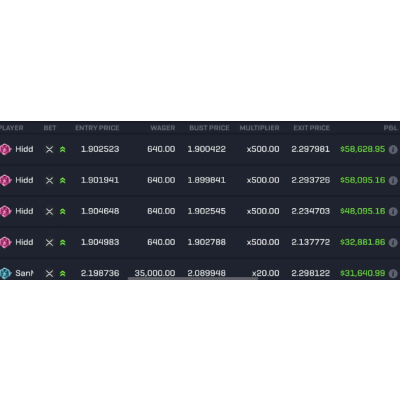

In the world of cryptocurrencies, where volatility reigns supreme, a powerful trading strategy known as statistical arbitrage has emerged. With the aid of advanced algorithms and data analysis techniques, traders can capitalize on pricing inefficiencies and profit from market discrepancies. In this article, we’ll delve into the concept of statistical arbitrage and demonstrate how to build a crypto trading bot using Python to automate the process.
Understanding Statistical Arbitrage in Crypto Trading:
Statistical arbitrage is a strategy that aims to exploit temporary price discrepancies between related assets. By identifying patterns, correlations, and deviations in the market, traders can take advantage of these inefficiencies to generate profits. In the realm of cryptocurrencies, where rapid price fluctuations are commonplace, statistical arbitrage can be a powerful tool for traders seeking to capitalize on short-term opportunities.
Building a Statistical Arbitrage Bot in Python:
To bring statistical arbitrage to life, we’ll develop a simple yet effective crypto trading bot using Python. This bot will leverage historical price data, perform statistical analysis, and execute trades based on predefined strategies. Here’s a step-by-step guide on building the bot:
Step 1: Data Collection
To start, we need historical price data for the cryptocurrencies we wish to trade. Popular cryptocurrency exchanges provide APIs that allow us to fetch this data programmatically. We’ll use libraries like requests and pandas to retrieve and store the price data in a suitable format.
import requests
import pandas as pd
# Fetch historical price data using API
def fetch_price_data(symbol, start_date, end_date):
url = f"https://api.exampleexchange.com/price_data?symbol={symbol}&start_date={start_date}&end_date={end_date}"
response = requests.get(url)
data = response.json()
df = pd.DataFrame(data)
df['timestamp'] = pd.to_datetime(df['timestamp'], unit='s')
df.set_index('timestamp', inplace=True)
return df
# Example usage
symbol = 'BTCUSD'
start_date = '2022-01-01'
end_date = '2022-12-31'
price_data = fetch_price_data(symbol, start_date, end_date)Step 2: Data Analysis and Strategy Development
Once we have the price data, we can perform statistical analysis to identify potential trading opportunities. Common techniques include calculating moving averages, identifying standard deviations, and analyzing correlations between different cryptocurrencies. Based on these insights, we can develop trading strategies that exploit pricing discrepancies.
# Calculate moving averages
price_data['ma_short'] = price_data['close'].rolling(window=10).mean()
price_data['ma_long'] = price_data['close'].rolling(window=30).mean()
# Identify trading signals based on moving averages
price_data['signal'] = 0
price_data.loc[price_data['ma_short'] > price_data['ma_long'], 'signal'] = 1
price_data.loc[price_data['ma_short'] < price_data['ma_long'], 'signal'] = -1
# Example correlation analysis
correlation_matrix = price_data[['BTCUSD', 'ETHUSD', 'LTCUSD']].corr()
print(correlation_matrix)Step 3: Trade Execution and Portfolio Management
With the trading strategies defined, the next step is to execute trades based on the identified signals. This involves interfacing with the chosen cryptocurrency exchange API to place buy and sell orders. It is essential to implement proper risk management techniques, such as setting stop-loss and take-profit levels, to protect against adverse market movements.
# Execute trades based on signals
def execute_trade(symbol, quantity, side):
# Code to execute the trade on the exchange API
pass
# Example trade execution based on signal
if price_data['signal'].iloc[-1] == 1:
execute_trade('BTCUSD', 1, 'buy')
elif price_data['signal'].iloc[-1] == -1:
execute_trade('BTCUSD', 1, 'sell')Statistical arbitrage in the realm of cryptocurrencies provides a unique opportunity for traders to capitalize on market inefficiencies and generate profits. By building a crypto trading bot using Python, we can automate the process and take advantage of these opportunities in a systematic and efficient manner. However, it’s important to note that trading cryptocurrencies involves inherent risks, and it’s crucial to thoroughly backtest and evaluate your strategies before deploying them in live trading.
As you venture into the world of statistical arbitrage and crypto trading bots, remember to continuously monitor and refine your strategies, adapt to changing market conditions, and practice effective risk management. The combination of sophisticated algorithms, data analysis, and disciplined execution can unlock the potential for success in this dynamic and exciting field.
So, embrace the power of statistical arbitrage, harness the capabilities of Python, and embark on your journey to conquer the crypto markets. With careful research, diligent development, and an unwavering commitment to learning, your crypto trading bot may hold the key to unlocking untold opportunities and potential riches.